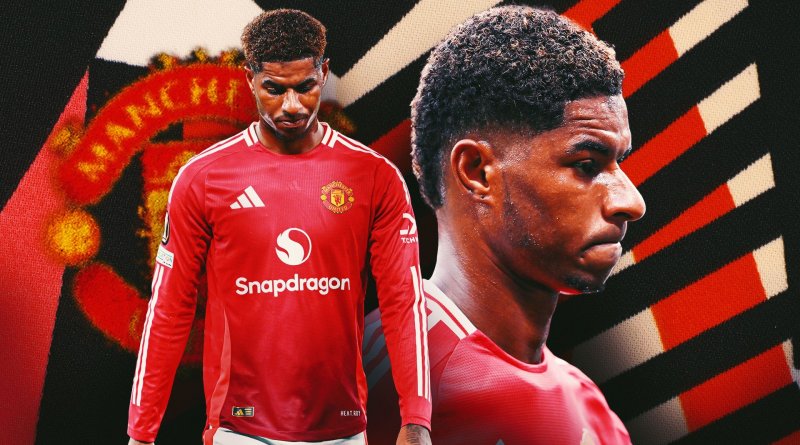Marcus Rashford Transfer Stalemate Threatens United’s Plans
Marcus Rashford transfer uncertainty is hanging over Manchester United’s off-season like a gathering storm cloud. The England international may be sweating through double sessions in Marbella, but his future remains frozen, and every day that ticks by draws player and club closer to an awkward reunion neither side wants.
Why the Marcus Rashford transfer has stalled
Last December, incoming head coach Rúben Amorim made it clear that Rashford would not be part of his long-term vision. A short-term loan to Aston Villa was supposed to shop-window his talents and slash United’s wage bill. Instead, it highlighted the problem: although still capable of electric bursts, Rashford’s inconsistent finishing and £300,000-per-week salary dimmed widespread interest. United set a lofty asking price believed to be north of £55 million, but even cash-rich Premier League rivals balked once salary demands entered the conversation. On the continent, only Paris Saint-Germain toyed with the idea, and their priority quickly became replacing Kylian Mbappé with younger, cheaper talent.
Financial realities bite
United’s hierarchy had banked on recouping a sizable fee to fund their own squad rebuild. Yet the numbers do not add up. Any permanent Marcus Rashford transfer would carry a total investment of roughly £90 million across fee and wages. In an era of Profit and Sustainability Rules, few clubs can take that gamble on a forward who scored just seven league goals last season.
The loan-cycle trap for Rashford and United
Accepting another loan appears the simplest way to keep him off the books, but it is a short-sighted fix. A second successive loan would push Rashford a year closer to free agency, further eroding resale value. Worse, United would still be expected to subsidise part of his wages. The club spent years criticising previous regimes for parking expensive talent on loan; repeating the pattern undermines their new sporting project under Sir Jim Ratcliffe.
Possible suitors and why they are hesitant
• Tottenham admire Rashford’s direct running but prefer a versatile forward on lower wages.
• Bayern Munich monitor the situation yet focus on a traditional No. 9 after Harry Kane’s arrival.
• Saudi Pro League sides would meet United’s fee, but at 26 Rashford remains reluctant to leave elite European competition.
The result is a market stalemate where everyone waits for someone else to blink.
Lowering the fee could unlock a Marcus Rashford transfer
United must decide whether pride or pragmatism guides their summer strategy. Slashing the asking price to around £35 million could tempt Newcastle or AC Milan, clubs able to absorb a big salary if the initial outlay is manageable. Rashford, for his part, may need to reconsider wage expectations. A structured deal laden with performance bonuses—similar to Alexis Sánchez’s move to Inter—could bridge the gap between desired income and buyers’ caution.
What Rashford risks by returning to Carrington
Reporting back for pre-season would thrust Rashford into a fishbowl. Cameras would track every handshake with Amorim, every missed chance in training. Distraction is inevitable, and fans already frustrated by last season’s eighth-place finish may focus their ire on a player perceived as overpaid. From a sporting perspective, being frozen out of tactical sessions would erode match sharpness months before Euro 2028 qualifiers.
United’s broader rebuild complicates matters
The Red Devils want a new centre-back, a box-to-box midfielder and a striker. They cannot fund all three without significant sales. Jadon Sancho is expected to depart, but his fee alone will not cover the wish list. Therefore, resolving the Marcus Rashford transfer impasse becomes mission-critical. Each week of delay tightens financial handcuffs and forces compromises elsewhere in the squad.
Player power in the modern market
Rashford’s camp points to his 30-goal haul two seasons ago as proof of elite potential. They argue that, in the right system, he remains one of Europe’s most devastating transition forwards. Market analysts counter that 2022/23 is looking like an outlier, and clubs buy future performance, not past peaks. Until both sides converge on realistic expectations, movement will be minimal.
What happens next?
The first decisive date is 7 July, when United players not at international tournaments report for duty. If no bid materialises, club officials will attempt behind-the-scenes mediation to avoid daily tabloid drama. One scenario involves granting Rashford an extended leave of absence while negotiations continue—a face-saving gesture that delays but does not solve the core issue. Alternatively, Amorim could reintegrate him conditionally, yet that risks dressing-room disharmony.
Long-term consequences of inaction
• Asset depreciation: Each season of limbo reduces potential transfer fee.
• Wage drain: Even a 50% loan subsidy equates to roughly £7.8 million annually.
• Sporting blockage: Emerging talents like Omari Forson lose squad spots when high earners remain on the books.
Opinion: Time for tough decisions
United’s recruitment errors of the past decade were fuelled by misaligned valuations and delayed exits. The Marcus Rashford transfer saga is perilously close to repeating history. Cutting the fee now may sting, but it prevents a far costlier spiral of loans and wage write-offs. For Rashford, embracing a fresh start—even at a reduced pay packet—could revive a career that has drifted. Pride built Old Trafford, yet pragmatism must steer its next chapter.
Your global gateway to nonstop football coverage:
News Goal
Share this content:

